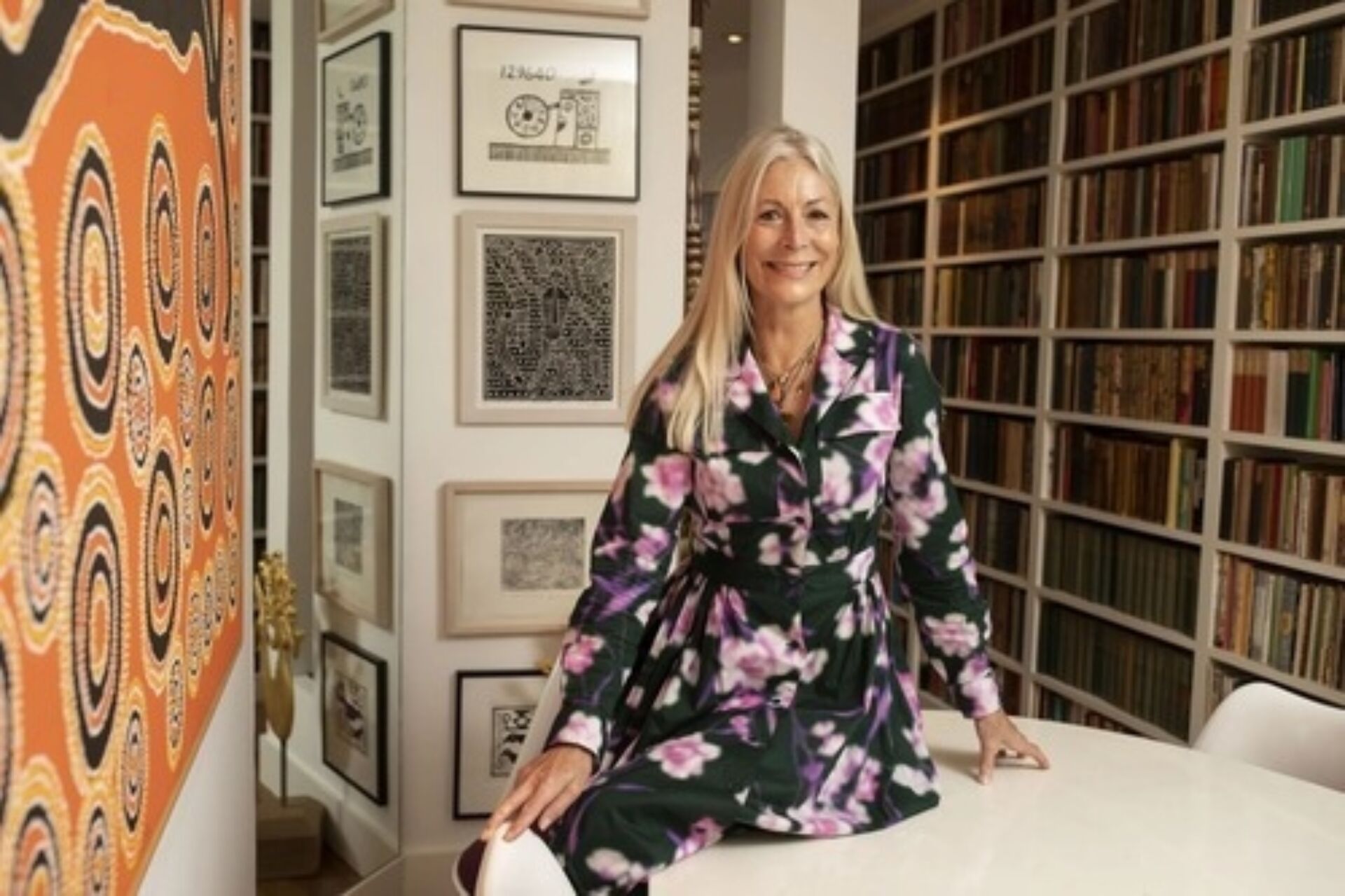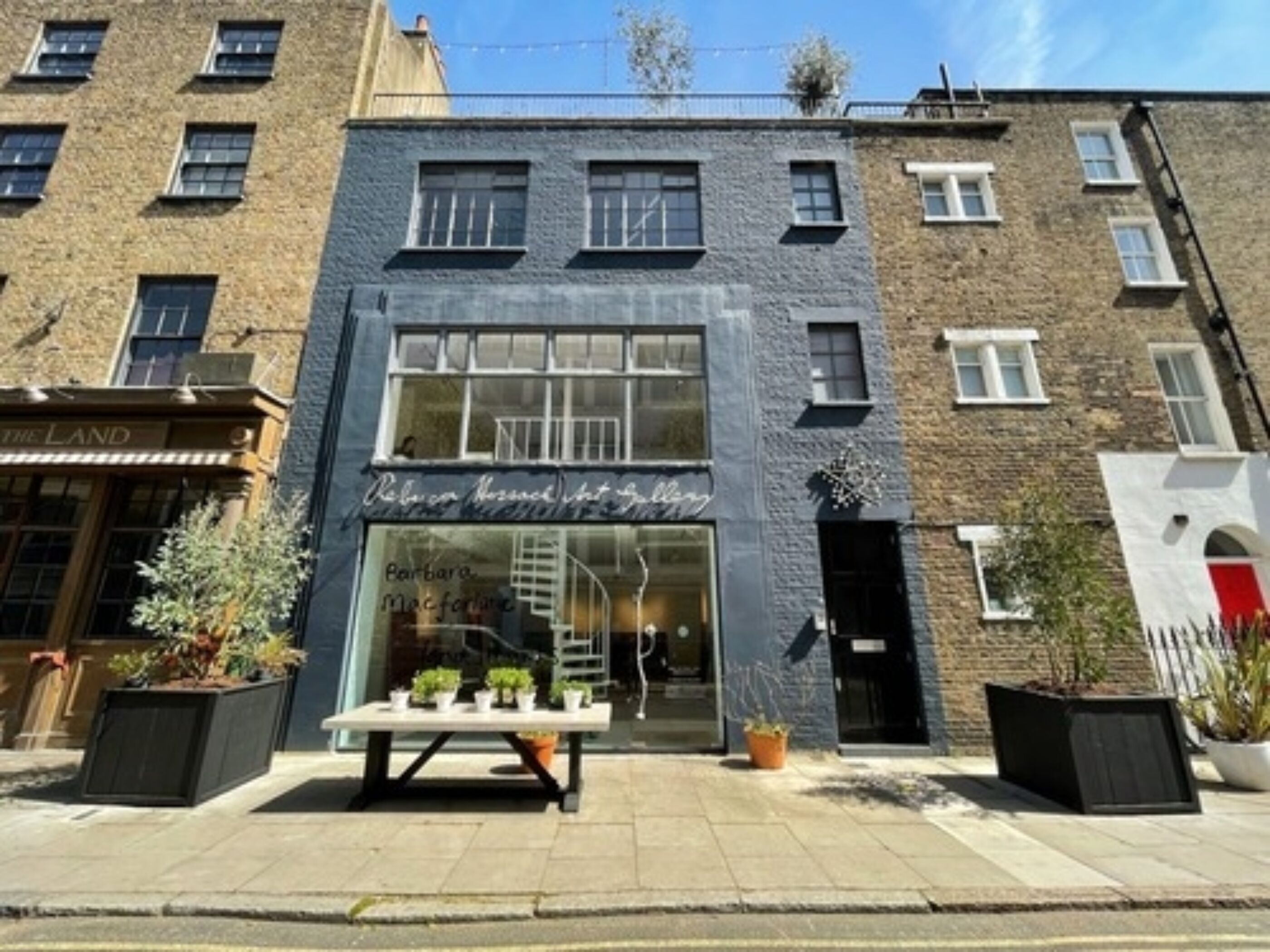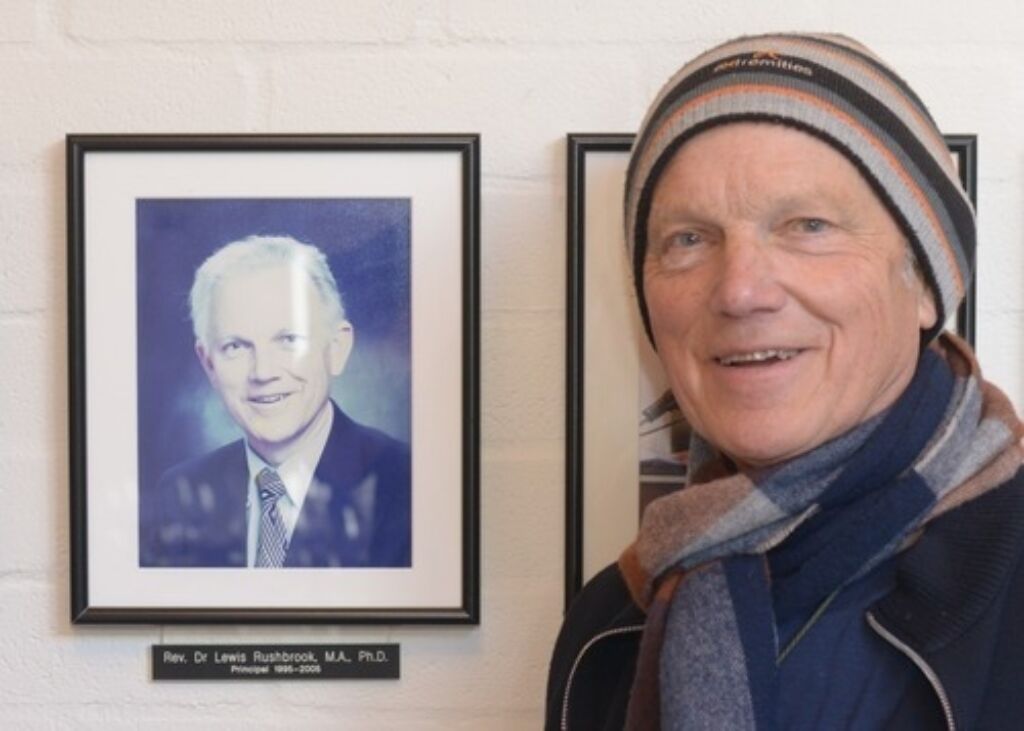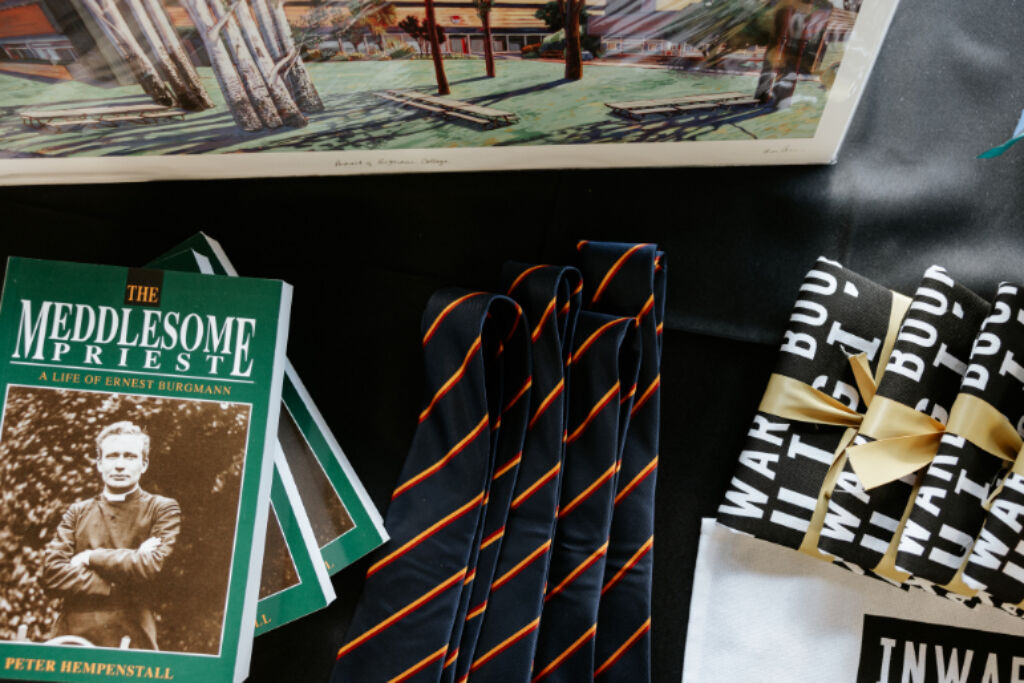Alumna Rebecca Hossack (1976–1977) reflects on her decision to reside at Burgmann College while attending the ANU, and the impact it had on life and career.
It is no exaggeration to say that I fell in love with Burgmann College at first sight. After school I had enrolled in Arts and Law at Melbourne University, but just before commencement, I caught the bus to Canberra to visit a school friend enrolled at ANU, and staying at Burgmann College. As soon as I set eyes on the golden poplar trees, the creek, and Lake Burley Griffin sparkling in the distance, I fell in love with the College, and resolved to come and study there.
I spent most of my first year at Melbourne University trying to arrange a transfer to ANU, and to Burgmann specifically. I had a feeling that I would be able to study much more effectively in such a beautiful environment, able to watch the changing seasons from my window and live in such beautiful natural surroundings. The fact that Black Mountain rose up behind the college also gave me a sense of the magic of the place.
The Feng Shui was ideal—water in front, mountain behind and I felt very able to concentrate. I also liked the size of the rooms at that time. They were small and cell-like with just a little sink and shared shower and bathroom facilities, but there was something very conducive to study in this simple arrangement.
When I arrived at Burgmann to start the second year of my degree, I was not disappointed. I immediately settled into the rhythm of College life: the lovely lunches outside under the poplar trees, spring with daffodils and flowers growing through the grass, and always the sense of a benign and beautiful Nature. I don’t know why, but looking back, it seems like Camelot (: It never rained, except at night; the weather was always temperate, and I was extremely happy there.
I made many friends who continue to be friends to this day, and we had a lot of fun. On reflection, our fun was so innocent. On Sunday nights, I would take the ironing board out into the corridor, and while I did my ironing, friends would sit around and chat. Or we would arrange picnics in the Brindabella’s, which I still regard as a sacred place. Most of our fun times could really have occurred in an Enid Blyton book!
The big event on Friday afternoons was to go into Civic and have pancakes in the Dubbl Dekka; an old bus that had been converted into a cafe. It was something that we all looked forward to enormously.
In my corridor was Hugh Borrowman (1975) and his girlfriend Suzanne Marley (1977) (they later married). We became firm friends and it was lovely to catch up with Hugh in London in the 1990s, when I was the Cultural Attaché at the High Commission and he was an Australian diplomat, resident in London. John Dauth, the former Australian High Commissioner in London, another Burgmann alumnus, has become a firm friend. And although we didn’t quite overlap at the College, we often share our fond memories of the place.
In my first year at Burgmann, my boyfriend was professional footballer Stephen Smith, who always caused great excitement in College when he would come from Melbourne to visit me and play football for the College football team. It was partly because of him (at least in my recollection) that Burgmann won the College football trophy when I was there.
Another memorable occasion was when Andrew Mulhollland, living a few doors down the corridor, knocked on my door and asked me if I would like to go parachuting. Andrew was crazy about sky-diving, so we set off, and after a couple of hours of training (jumping off a chair onto a mattress), we went up in a plane.
What they hadn’t explained during the training was how windy it would be up in the sky. As you stepped out onto the aeroplane strut, the wind was like a tornado. I was so terrified. Luckily, the rip-cord was attached to the plane so that as they ‘jumped’—or fell—into the air, the parachute opened.
Floating down from 6,000 feet, looking at the landscape of Canberra spread out beneath me, was a beautiful, serene experience, but the terror of those seconds before my parachute opened was still more vivid. The next weekend when Andrew appeared at my door, saying, ‘Wasn’t it great? Do you want to come again,’ I said, ‘Never, ever, ever!’
Sadly, I never won any sporting or academic distinctions while I was Burgmann. However, at the farewell dinner at the end of my last term, after all the academic and sporting prizes had been awarded, I was astonished to hear my name read out as the winner of a specially created prize for ice cream eating! It remains the only award I have ever won. The prize itself was a huge 10-gallon container of ice cream brought directly from the kitchen. To celebrate, my friends and I promptly sat down and ate our way through it that evening. I can honestly say that I got drunk on ice cream: if you eat that much, the sugar seems akin to alcohol.
Bill Rankin, another friend from Burgmann, remains another good friend, and others, too, who remain woven into the tapestry of my life.
After Burgmann, slightly under parental pressure, I went to London to study to be a Barrister at the Inns of Court. However, I had never really enjoyed my five years of legal studies and had always hoped to pursue a career in the art world. I figured that in London, at least, I would be able to go and see the great museums and galleries and see pictures and sculptures that I had only known beforehand in reproduction.
Through a succession of serendipitous encounters, I was able to transfer from my legal course to do a diploma in Art History at Christie’s, a course that was then in its infancy. I absolutely loved that year and felt that I was a fish put back into water. From then on, I knew that my career was to be in the Arts (and in London).
In 1988, I rode my bicycle down a little street in Fitzrovia, in Central London, and saw a shop with a sign ‘For Rent’. Because it was such a lovely day, and people were sitting at tables outside the Greek restaurants on Charlotte Street, it reminded me of Burgmann and how we all used to sit outside and have our lunch.
I saw a man hosing the pavement outside the shop and asked him if he knew anything about it. He turned out to be the landlord, and almost before I knew it, I had signed a twenty-year lease and decided to open a gallery. I had few contacts and no money, but Barclays Bank gave me a £10,000 overdraft facility without any security. I have never forgotten that kind bank manager!
So, later that year, after ‘Black Wednesday’ heralded the beginning of the worst recession until then, I opened my gallery. I had no experience of running a business, I knew nothing about finance and I didn’t really know anyone in England. But I lived and breathed for the delight that art and paintings gave me.
Facing extreme adversity is certainly a good way to learn about running a business! I did it all: from scrubbing the floors to working with artists to publicising and organising the exhibitions. It was terrifying in some ways, but I was determined to make it work in the face of all obstacles.
The gallery is now 34 years old. The first 10 years were hand-to-mouth. It wasn’t easy, but I have never regretted my decision. I have always enjoyed it and continue to do so. I have made many mistakes, but, of course, that is how you learn: each setback is a learning experience.
My great passion and privilege in my life as a gallerist has been to work with Aboriginal people. We were one of the first galleries outside Australia to show Aboriginal art in a consistent and concerted way and to work with artists and communities.
I was able to give one-person exhibitions (usually for the first time in Europe or the UK) to artists as great as Emily Kame Kangwarre and Jimmy Pike. Clifford Possum came to stay with me on several occasions, and I was able to arrange for him to meet Her Majesty the Queen: a memorable encounter for both of them. He described it as his ‘Number One Day’. It certainly ranks as my Number One Day.
Over the past three-and-a-bit decades, the gallery has worked with all the major Aboriginal communities. During our annual Songlines Season of Aboriginal art exhibitions, we always like to have the artists come over to see their work in the gallery and meet the people who acquire it. This has been hugely enjoyable, as well as being a wonderful source of dialogue over the years: a two-way learning experience.
The gallery however, also shows work by ‘Western’ artists, and one of my particular concerns has been to support mid-career female artists. As a group, they have often been sidelined by the art establishment. Sometimes, they have had a break in their careers because they have been occupied with raising a family, and when they come back, they find it hard to re-enter the art world. The gallery can offer them support, enthusiasm and encouragement. We certainly now have an amazing gathering of women artists from around the world, all producing work of extraordinary strength and vitality.
In 2008, I moved the gallery from the original little shops on Windmill Street to a new three-story building at the other end of Fitzrovia. It is a beautiful space: an old industrial building with large windows and clear, simple lines.
Part of our ethos as a gallery is very much inspired by my love of nature, which was nurtured at Burgmann College. We have created a little garden at the gallery, and I am a guerrilla gardener in the surrounding streets. I ran the New York Marathon several years ago and raised £20,000 to plant 75 trees in and around Fitzrovia. They are a great source of joy and pride to me now, as they are fully mature.
The gallery has a strong belief in community. We are the co-organisers of the annual Fitzrovia Arts Festival, which brings together world-famous musicians, performers, writers and artists from the area for a series of free concerts and events. It has become an established fixture and, in 2021, was voted one of the 10 best festivals in London.
In addition to organising the annual gallery program of artists' shows, I travel virtually non-stop. The gallery presents over 20 international art fairs a year, so pretty much every second weekend, I am in a different city. This week I am off to Miami for the big Miami Basle Art Week and then on 8 December I am opening my new gallery in the US: previously located in Mott Street New York for 10 years, and now situated in Little Havana, Miami.
So the excitement and challenges continue…
Read more about Rebecca's work on her website: https://www.rebeccahossack.com








